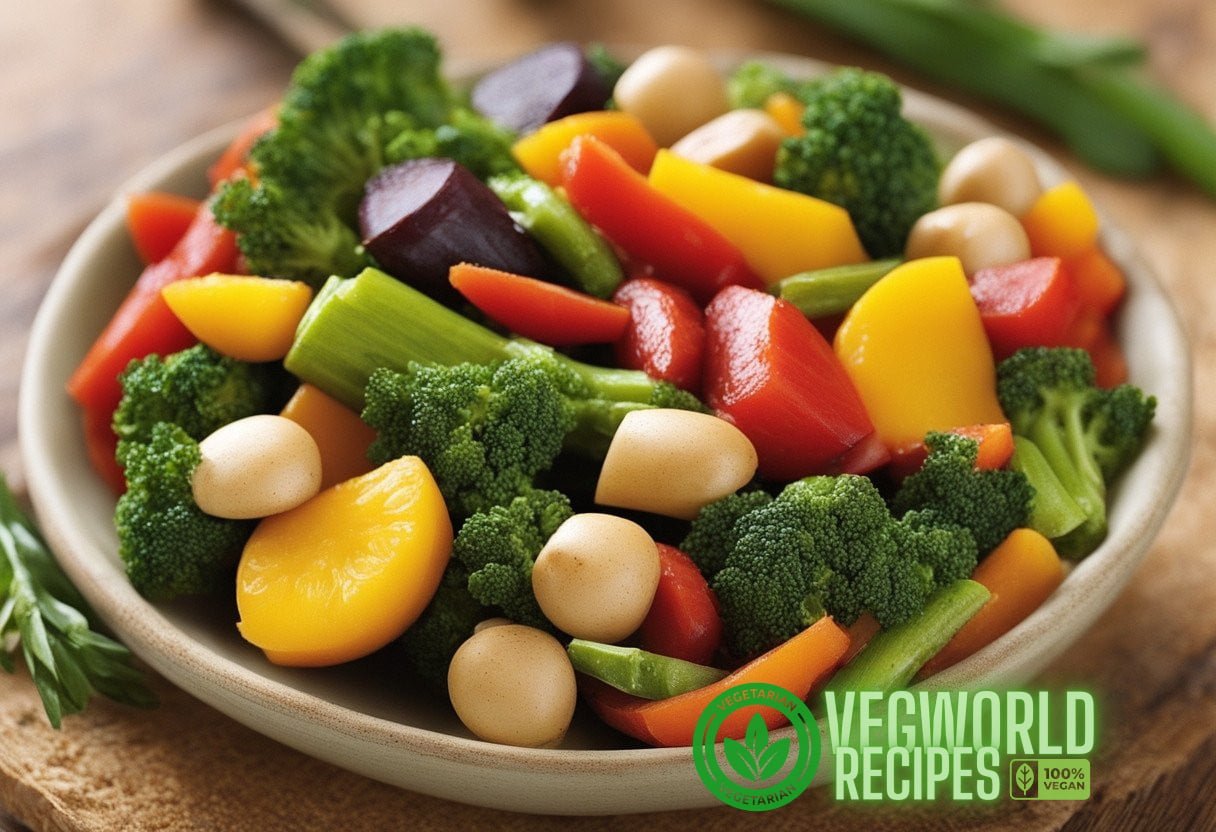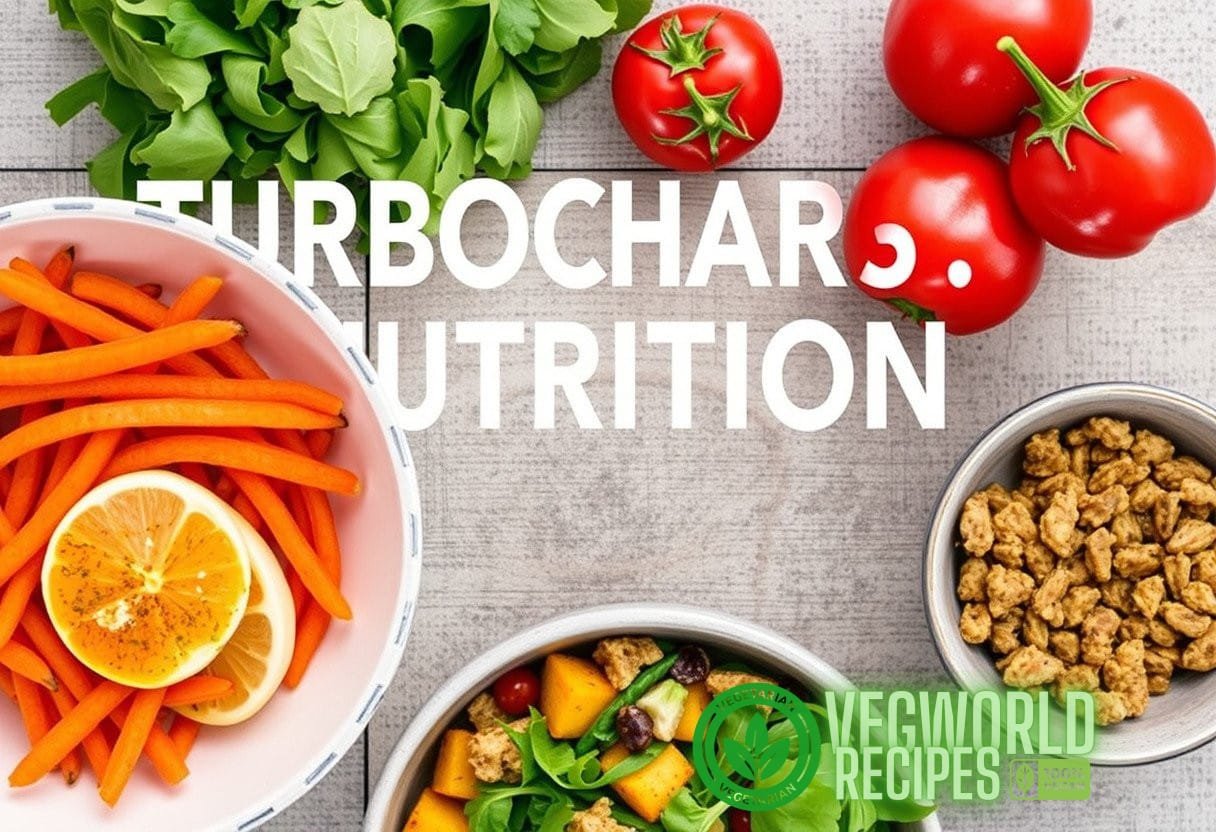Speedy Veggie Cuisine: Harnessing Biochemical Insights for Nutritious, Fast-Paced Lifestyles
In today’s fast-paced world, maintaining a diet that is both nutritious and convenient can be a significant challenge. For those who prioritize health without compromising on time, Speedy Veggie Cuisine offers a solution by leveraging biochemical insights to create quick, veggie-based meals.
Understanding the Biochemistry of Vegetables
Vegetables are packed with a host of essential nutrients, ranging from vitamins and minerals to antioxidants and fibers. At the core of these benefits is the biochemical composition of each vegetable, which plays a crucial role in human health. Understanding this composition helps in crafting meals that maximize nutritional value while minimizing preparation time.
Key Nutrients in Vegetables
- Vitamins: Essential for metabolic processes and overall wellbeing. Examples include Vitamin A (carrots, sweet potatoes), Vitamin C (bell peppers, broccoli), and Vitamin K (kale, spinach).
- Minerals: Important for bone health, muscle function, and various biochemical reactions. Key minerals found in vegetables include potassium (avocados, spinach) and magnesium (pumpkin seeds, almonds).
- Antioxidants: Protect the body from oxidative stress and inflammation. Vegetables like tomatoes and berries are rich sources of antioxidants such as lycopene and anthocyanins.
- Fibers: Aid in digestion, maintaining a healthy gut biome, and regulating blood sugar levels. High-fiber vegetables include artichokes, peas, and Brussels sprouts.
The Science of Cooking Vegetables Quickly
Balancing speed and nutrition in cooking vegetables involves understanding the reactions that occur during the cooking process. Different cooking methods affect the nutrient retention in various ways, and using the correct techniques can help preserve the valuable nutrients while creating delicious meals rapidly.
Effective Cooking Techniques
- Blanching: This method involves briefly boiling vegetables and then plunging them into ice water. Blanching preserves the color, texture, and nutrient content while speeding up the cooking time.
- Steaming: Retains nutrients better than boiling, as it avoids nutrient leaching into water. Quick steaming is excellent for retaining the vibrant color and crunchy texture of vegetables like broccoli and green beans.
- Microwaving: An efficient method for cooking vegetables quickly without excessive nutrient loss. Utilizing microwave-safe dishes and minimal water helps in retaining vitamins and minerals.
- Sautéing: Quickly cooks vegetables in a small amount of healthy oil. This method enhances the flavor and texture, making it ideal for mixed veggie dishes like stir-fries.
Incorporating Speedy Veggie Cuisine into Your Daily Routine
Adopting Speedy Veggie Cuisine doesn’t mean sacrificing flavor or nutrition. Practical strategies and meal prepping can make it easier to integrate these dishes into your daily routine. Here are some steps to help you get started.
Meal Prepping with Vegetables
- Chop Ahead: Spend a few minutes during the weekend chopping vegetables. Store them in airtight containers in the refrigerator for ready-to-use ingredients throughout the week.
- Batch Cooking: Prepare large batches of vegetable-based dishes that can be easily reheated. Soups, stews, and roasted vegetables are excellent options for batch cooking.
- Utilize Convenience Products: Pre-washed and pre-cut vegetables, frozen veggies, and canned beans can drastically cut down on prep time while still providing essential nutrients.
Recipes: Quick and Nutritious Veggie-Based Meals
Here are some easy-to-make recipes that align with the principles of Speedy Veggie Cuisine. These dishes are not only quick to prepare but also packed with essential nutrients, making them ideal for a nutritious, fast-paced lifestyle.
1. Quick Veggie Stir-Fry
Ingredients:
- 1 cup broccoli florets
- 1 bell pepper, sliced
- 1 cup snow peas
- 2 garlic cloves, minced
- 2 tbsp soy sauce
- 1 tbsp olive oil
- Cooked rice or quinoa
Method:
- Heat olive oil in a large skillet over medium-high heat.
- Add garlic and sauté until fragrant.
- Add broccoli, bell pepper, and snow peas. Stir-fry for 4-5 minutes until vegetables are tender-crisp.
- Stir in soy sauce and cook for another 2 minutes.
- Serve over cooked rice or quinoa.
2. Blanched Spinach Salad with Lemon Dressing
Ingredients:
- 4 cups fresh spinach leaves
- 1/4 cup sliced almonds
- 1/4 cup dried cranberries
- 1 lemon, juiced
- 2 tbsp olive oil
- Salt and pepper to taste
Method:
- Blanch spinach leaves in boiling water for 1 minute, then immediately transfer to ice water.
- Drain and pat dry the spinach leaves.
- In a large bowl, combine spinach, almonds, and cranberries.
- Whisk lemon juice, olive oil, salt, and pepper to create the dressing.
- Drizzle the dressing over the salad and toss to combine.
3. Microwave Steamed Asparagus
Ingredients:
- 1 bunch asparagus, trimmed
- 2 tbsp water
- 1 tbsp lemon juice
- Salt and pepper to taste

Method:
- Place asparagus in a microwave-safe dish and add water.
- Cover with a microwave-safe lid or plate and microwave on high for 3-4 minutes.
- Remove, drizzle with lemon juice, and season with salt and pepper.
Balancing Macronutrients in Veggie-Based Meals
While vegetables are rich sources of vitamins, minerals, and fibers, it’s essential to ensure these quick meals provide a balanced intake of macronutrients – carbohydrates, proteins, and fats – to keep you energized and satisfied.
Incorporating Proteins
Proteins are crucial for muscle repair, enzyme synthesis, and immune function. Vegetarian protein sources can be easily integrated into Speedy Veggie Cuisine:
- Legumes: Lentils, chickpeas, and black beans can be added to salads, stews, or turned into spreads like hummus.
- Nuts and Seeds: Almonds, sunflower seeds, and chia seeds work well in salads, stir-fries, and smoothies.
- Tofu and Tempeh: These soy-based products are versatile and can be sautéed, grilled, or added to curries and stir-fries.
Healthy Fats
Fats are vital for brain health, hormone production, and nutrient absorption. Include a variety of healthy fat sources:
- Avocados: Great in salads, spreads, and smoothies.
- Olive Oil: Ideal for dressings, sautéing, and roasting.
- Nuts and Seeds: In addition to being protein sources, they also provide healthy fats.
Boosting Flavor While Minimizing Prep Time
Speedy Veggie Cuisine values the balance between efficiency and taste. Enhancing flavors doesn’t require extensive cooking time; simple techniques and seasonings can elevate your dishes.
Flavor Enhancement Techniques
- Herbs and Spices: Fresh herbs like basil, cilantro, and parsley, along with spices such as cumin, turmeric, and paprika, can add depth and complexity to veggie dishes.
- Aromatics: Garlic, onions, and ginger provide robust flavors and can be quickly sautéed to enhance any dish.
- Zesty Finishes: A squeeze of citrus juice or zest, as well as vinegars like balsamic or apple cider, can brighten up your dishes.
Leveraging Convenience for a Busy Lifestyle
Utilizing convenience products and new technologies can help streamline your efforts in preparing speedy yet nutritious veggie meals. Whether it’s pre-packaged vegetables or innovative kitchen gadgets, these tools make it easier to maintain a healthy diet.
Convenience Products
- Pre-Cut Veggies: Many supermarkets offer pre-chopped vegetables that save prep time.
- Frozen Vegetables: These retain most of their nutrients and are an excellent alternative to fresh produce.
- Microwavable Packs: Ready-to-eat vegetable packs that can be heated in minutes are perfect for quick meals.
Technology in the Kitchen
- Instant Pot: Ideal for quick cooking of veggies, grains, and even complete meals with minimal supervision.
- Food Processors: Speed up chopping, grating, and slicing tasks.
- Spiralizers: Turn vegetables into noodles for quick and healthy alternatives to pasta.
Incorporating Superfoods into Speedy Veggie Cuisine
To further enhance the nutritional profile of your quick meals, incorporating superfoods can provide an extra boost. Superfoods are nutrient-dense and bring additional health benefits.
For more information on superfood veggies, refer to
A plant-based diet is not only beneficial for your health but also for the environment. By focusing on quick veggie meals, you can substantially reduce your carbon footprint compared to diets heavily reliant on animal products. Speedy Veggie Cuisine, underpinned by biochemical insights, offers a practical and effective way to maintain a nutritious diet amidst a hectic schedule. By incorporating quick-cooking techniques, balancing macronutrients, utilizing convenient products, and adding superfoods, you can enjoy flavorful, healthy, and sustainable meals daily. Discover more quick veggie-packed meal ideas here. Embrace the benefits of Speedy Veggie Cuisine today and elevate both your health and lifestyle with nourishing, plant-based quick meals.Examples of Superfoods
Environmental Impact of Speedy Veggie Cuisine
Sustainable Eating
Conclusion: Embrace the Benefits of Speedy Veggie Cuisine



